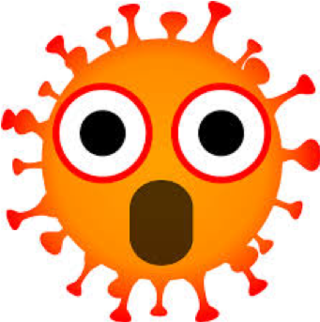
Coronavirus Disease 2019
Calm in the Time of Coronavirus
How information and good decisions can calm you in these trying times.
Posted March 9, 2020 Reviewed by Jessica Schrader

One of the greatest reasons for panic is when people do not feel they have good information they can trust, and when they do not feel they have choices. In the throes of this viral crisis, many of us feel the information we are receiving is over-stated, under-stated, or being hidden from us in some way. The aim of this piece is to help you navigate this information with clear facts, and then offer resources for what you can do.
COVID-19 Statistics: Some Good News and Some Not-So-Good News
The good news is it seems the vast majority of people who get infected with this new virus have mild or no symptoms. Studies in China suggest over 80% of infected people have a mild illness: but the not-so-good news is that about 12 percent do have a severe illness, with 2 or 3% of infected patients having a fatal condition. Theoretically, if this becomes a global pandemic infecting millions of people, a fatality rate of 2 to 3% would be catastrophic and could approach the 50 million people lost during the Spanish Flu of 1918.
Statistics: Some Better News
What we just discussed is the doomsday scenario that many experts believe is not likely. Studies from other areas and China, and also, from other parts of the world, suggest the fatality rate is much lower at 0.2 to 0.7 percent (two to seven out of thousand people). It is possible that all these dire predictions are inflated because the focus of these studies have looked at already very sick people, and likely have not counted the possibly thousands of cases with mild or no symptoms that were never counted.
For perspective, the seasonal flu, by comparison, has a mortality rate of about 0.01 percent (1 in 10,000 people). So, once we have all the data, it is our best hope that this coronavirus may end up not having much more of an impact than the flu (which does kill about 300,000 worldwide every year —not something to sneeze at).
One good sign is that the World Health Organization believes the COVID-19 does not spread as easily as the typical seasonal flu [1]—so with a higher possible death rate, less spread is very, very important. A number of doctor friends of mine that I have talked to personally believe that the COVID-19 will be another moderate to severe flu-type of disease in terms of impact. I hope they are correct.
Also, according to a well-researched article from the New Yorker [2], if this virus follows others like it from the past, this strain may infect a lot of people, but will most likely not prove to be more virulent than others we have seen in the recent past and will likely subside in a few months.
Probably the most positive statistics just came out of South Korea, who has the most aggressive testing, and the most accurate statistics. Out of 158,000 people tested, 6,284 people tested positive, and there were 42 deaths.[3] This translates to a 0.67 percent death rate, which is certainly higher than the flu, but is not as high as other pathogens we have seen before, like SARS, MERS, or the bird flu.
Because it is a new virus, we can’t be sure how mild or severe it will be, which is why there is all is hype, especially because it may infect a lot more people than something like the flu and ultimately overwhelm the hospital systems;
What About Children?
For you concerned parents out there, it is important to note that children are least likely to contract the coronavirus and there is minimal sickness, and are virtually no deaths in children. [4] This is much different than modern influenza or the Spanish Flu, which did kill young people at a high rate. Although we are not sure why this is, it seems children have a stronger innate immunity. The innate immune system is a first-line part of the immune system that dismantles viruses and bacteria the first time we come in contact with a new one.
Don’t Panic—This Virus Will Probably Reach You
Right now, the COVID-19 virus is spreading quickly in many parts of the country as it is around the world. Monitoring going on in Nassau and Suffolk counties (in New York) where I live [5] is showing increasing numbers of confirmed cases throughout the region. This is also happening throughout the country and numbers will continue to rise as we start to test more. The few unfortunate deaths seem to have occurred in elderly patients with underlying illnesses. While still relatively few in numbers, it is probable that the virus will be at all our doorsteps in the coming weeks to two months.
It is very likely there are actually many, many more cases in our midst that we do not know about because the lab tests have been unavailable due to poor decisions by the government and Centers for Disease Control (CDC) in the manufacturing of lab testing.[6] As a result, even though everyone saw this coming, the CDC has squandered weeks and months of testing ability, which is inexcusable ( I bring this up only because we need to learn how to best prepare for the next virus by learning from our mistakes—a mistake is only a mistake when we do not learn from it).
But, one consolation in all this lack of testing and living with this virus already is that this could mean the virus effect has been mild enough here that we have not noticed anything more than the moderately to severe flu season that has already been recorded in the last month or two. As testing begins in the U.S., we will undoubtedly see greater numbers in the diagnosis of COVID-19. This does not mean you are in any greater danger than you are right now. But, as more confirmed cases surface, we will have to deal with the fact that the economy will suffer and the medical system could get overwhelmed as we have seen in other countries already.
If I Really Don’t Need to Panic, Why All the Hoopla?
Again, please take a deep belly breath and do not panic—this will not be doomsday.
The reason, though we need to take this seriously and disrupt our life and society is to protect those of us who are seniors and those who have predisposing health issues, especially those who are smokers and who have predisposing lung diseases. People in this category are 3.4 times more likely than otherwise-healthy flu patients to require ventilators and other intensive care (around 6 of 10 people in the U.S. have at least one underlying health condition.[7] The average age of death for people from COVID-19 is 80 years of age.[8] So for populations at risk, this is more than "just another flu."
Public health measures like quarantines, washing hands, etc., do really work. In fact, right now in Wuhan, China, infection rates have dropped [9] and now, they are more worried about outsiders bringing the disease back into the country. We need to help insure the spread is as minimal as possible, to protect the aged and the sick who are most at risk. That is what the hoopla is about.
What Choices Can I Make to Protect Myself?
Out of the scope of this PT website theme, you can access expertly detailed and evidenced-based natural medicines to be used in conjunction with conventional care for coronavirus/COVID-19 here. It will outline options and choices you can make to support yourself. Of course, if you are sick, you should always check in with your physician or go to the hospital if symptoms are severe (like shortness of breath). However, if the health care system becomes beleaguered, it is possible not everyone who needs care will have it available. As such, the options we can take to take care of ourselves may be the most important.
As Camus said in his book The Plague: “What’s true of all the evils in the world is true of plague as well. It helps men to rise above themselves.”
Camus is explaining to us what we already know intuitively, from a spiritual standpoint—that these things can and will happen, and we will rise up, help each other, and get through this.
References
[3] https://www.statista.com/statistics/1095848/south-korea-confirmed-and-suspected-coronavirus-cases/
[5] https://www.newsday.com/news/health/coronavirus-long-island-nassau-suffolk-cases-1.42265909
[6] https://www.propublica.org/article/cdc-coronavirus-covid-19-test
[8] https://www.cnn.com/2020/03/08/politics/surgeon-general-coronavirus/index.html



